Leading light: Foster + Partners’ Industrial Design shines bright
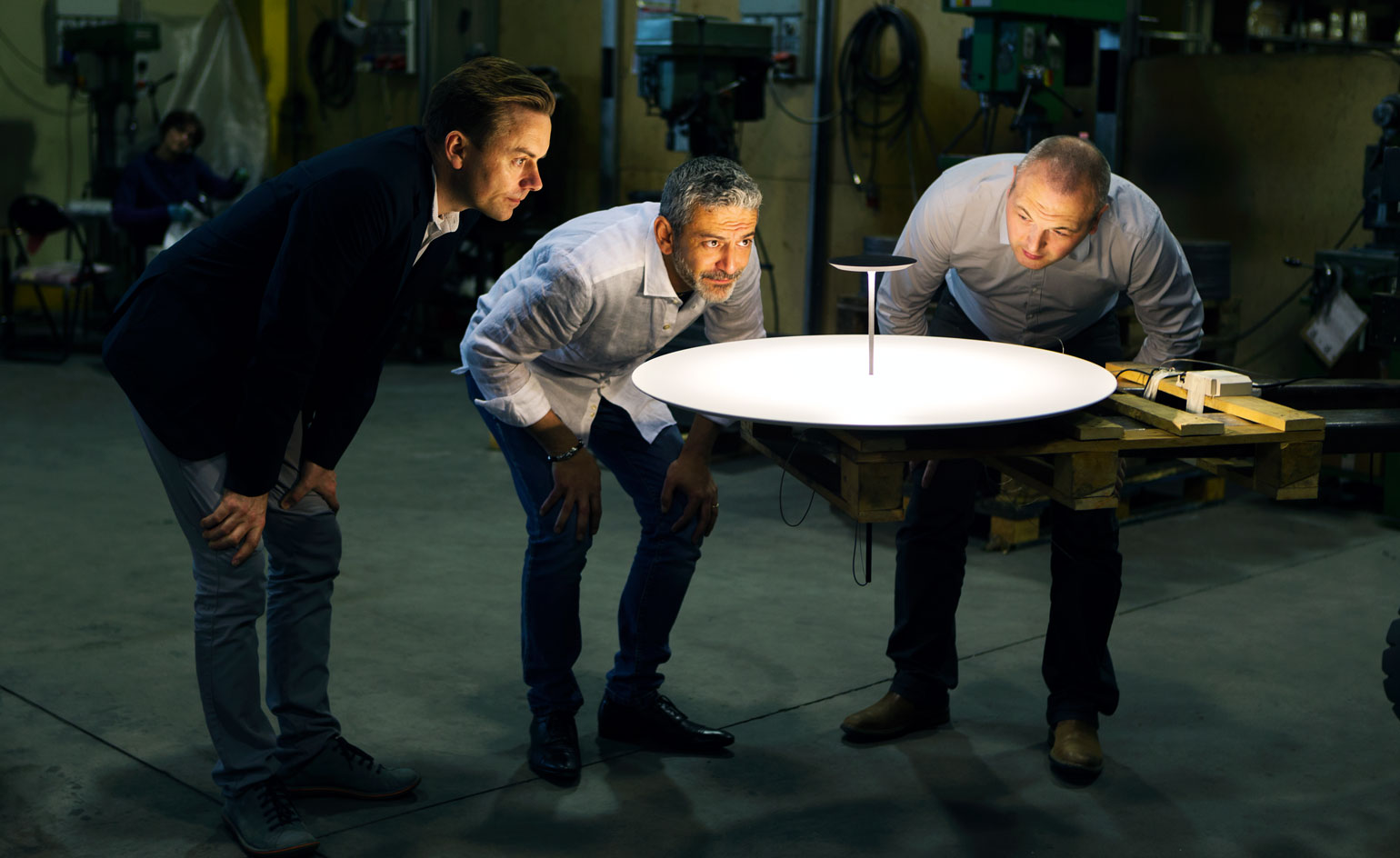
British architecture giant Foster + Partners is best known for its grand projects: Apple’s under-construction circular HQ, one of the largest buildings in the world, and a conceptual space station for Mars, currently on a Nasa short list, among them. The practice, based in London and with a network of offices and partners stretching from New York to Shanghai via the UAE, was founded in 1967 by the now Lord Foster, and today has a 1,500-strong team of architects, engineers, designers and more.
Its industrial design branch, a team of 15, works on everything from door handles to lighting for the practice’s architectural projects while also designing furniture and fittings as a stand-alone operation. This May, London’s Aram Gallery unveils two new lighting pieces designed by the team for Italian company Lumina, and takes the opportunity to celebrate Foster + Partners’ prolific industrial design output with a retrospective exhibition titled ‘Craft + Manufacture’, taking over the top-floor gallery.
The new lighting projects, ‘Dot’ and ‘Eva’, mark the studio’s second collaboration with Lumina (the first being the minimal ‘Flo’ lamp, designed in 2011). ‘Dot’ is a pendant lamp formed by two light discs connected by a metal stem, a simple form concealing great technological complexity. The result of several months of technical back-and-forth, ‘Dot’ looks like an effortless floating disc, achieved thanks to a combination of an LED circuit, a specially designed lens and a heat pipe, available in multiple sizes and finishes.
Similarly complex, ‘Eva’ is a tabletop lamp that was originally included in an earlier architectural project completed by Foster + Partners. The initial idea was to create a cone of light and a glow similar to a candle. A glass tube houses a COB (chip on board) LED that reflects light up into the cylinder, controlled by a free-moving wheel at the bottom of the lamp that serves as a dimmer.
Mike Holland, head of Foster + Partners’ Industrial Design group, notes that the genesis of these two projects illustrates the different ways in which the department works. The ‘Dot’ lamp started as an internal development, and was then taken to Lumina, while ‘Eve’ was developed as an architectural project and evolved as the building evolved before becoming a product for retail. ‘There are probably four different ways that products come into being,’ says Holland. ‘Whether it’s from an architectural project, whether we develop it internally, whether someone approaches us, or we just “entrepreneur” something: every product has its own sort of process and there are no rules.’
The exhibition at The Aram Gallery will showcase this dynamic approach and includes other Foster + Partners designs such as the ‘Nomos’ table for Tecno and the ‘Arc’ table for Molteni & C, as well as furniture for Poltrona Frau and Walter Knoll. It will also include prototypes and photographs of designs in development. ‘Industrial design has been there from the start of the practice,’ says Dave Nelson, overall head of design at Foster + Partners. ‘The way we design a building’s components comes from the building design.’ Nelson, who has been with the practice since the 1970s, has witnessed the development of the Industrial Design department and its involvement in projects of every scale.
‘While Foster + Partners is mainly known for its architecture, the industrial designs produced by the practice have been impressive; it maintains creativity and rigour in all its work,’ says Zeev Aram, co-founder and director of The Aram Gallery and a long-term friend of Lord Foster.
Part of the Industrial Design studio’s success is due to the fact that it has a solid structure backing it, and a wealth of experience it can draw from, with teams feeding each other throughout projects.
But it’s also rooted in a freedom and lack of precise aesthetic rules. ‘Lurking in there, there must be a kind of aesthetic’, concedes Nelson. ‘It’s not minimal but it’s kind of reduced, doing things so everything counts. Whether it’s a product or it’s a building, everything is there for a reason and must makes sense: I suppose that might be a guiding force for us.’
As originally featured in the June 2016 Issue of Wallpaper* (W*207)
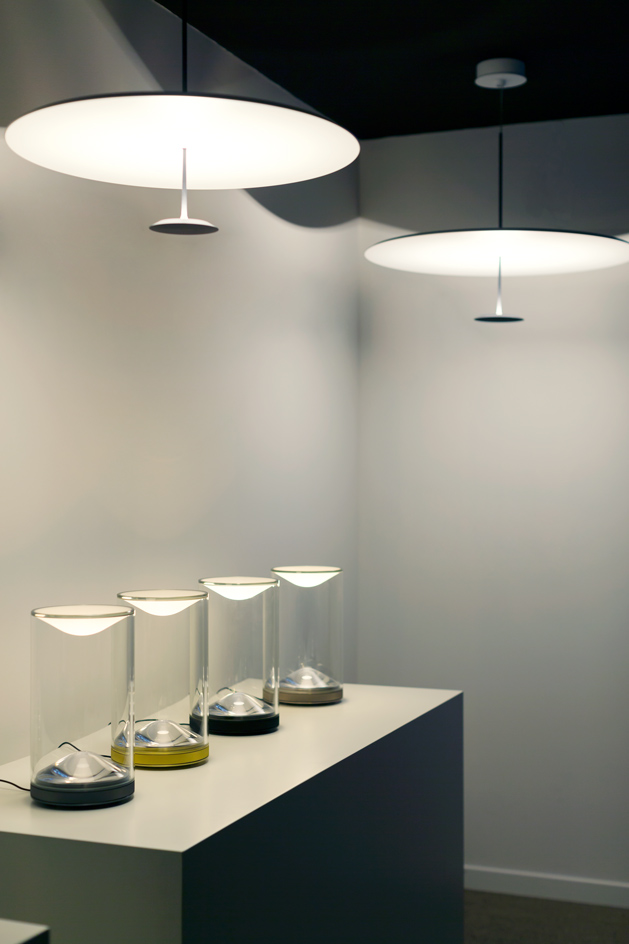
The ‘Dot’ hanging lamp, with its seemingly floating discs, and the glass-encased ‘Eve’ lamp both give off reflected light
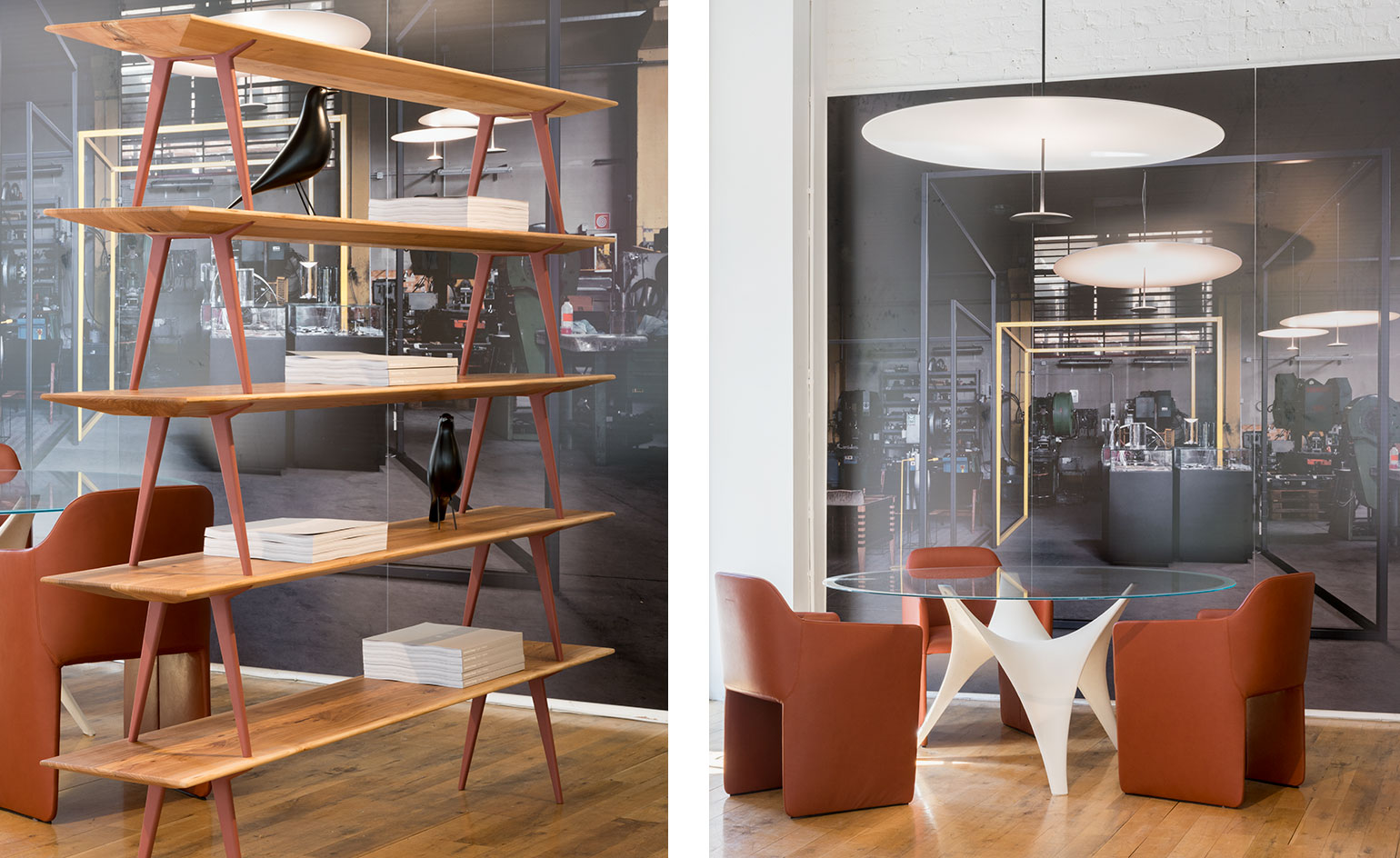
Pictured left: Benchmark's 'OVO' shelving unit in elm wood, designed by Foster + Partners. Right: the ‘Dot’ hanging lamp, created in collaboration with Lumina, hanging above Molteni & C's 'Arc' table, by Foster + Partners
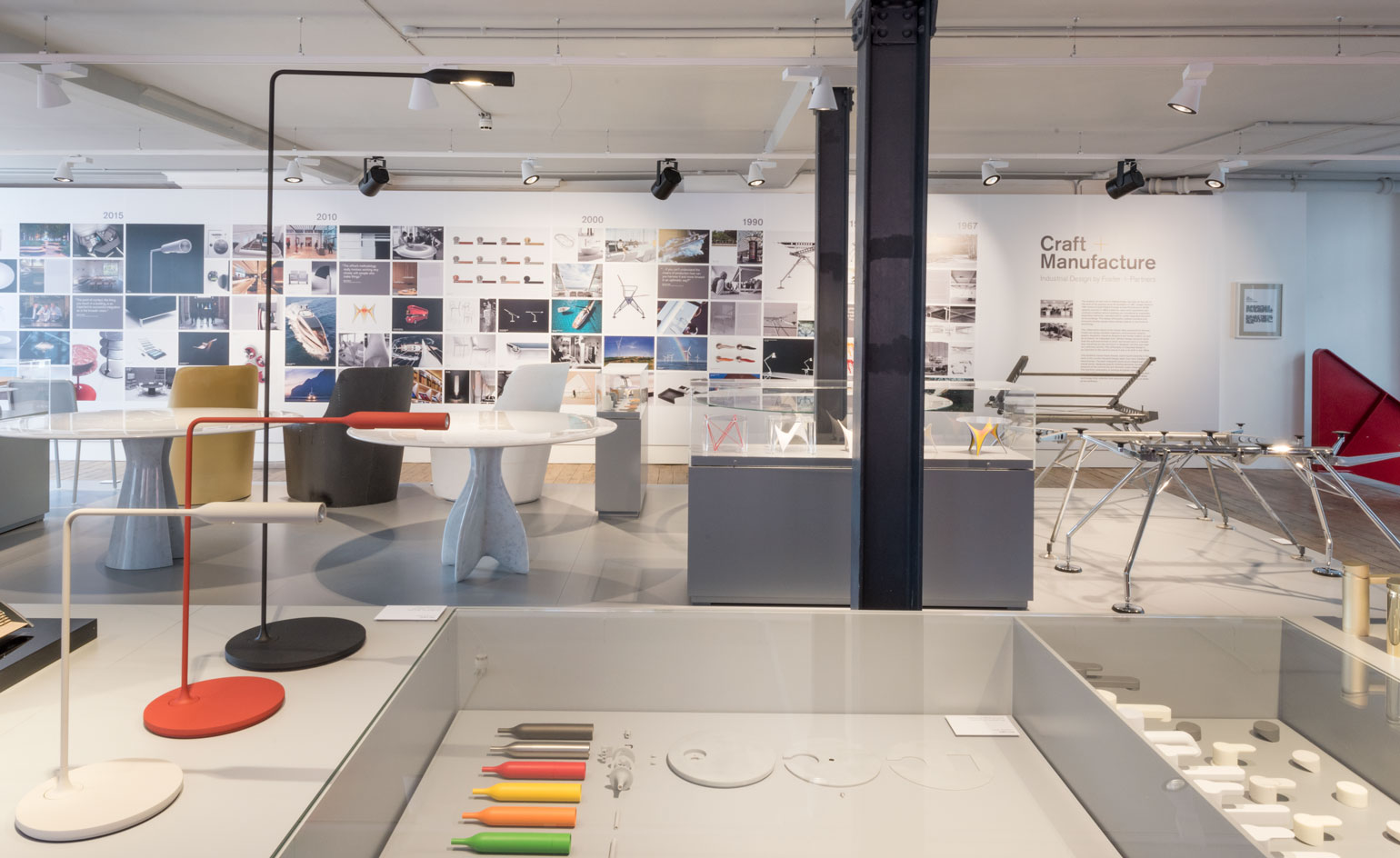
‘Craft + Manufacture: Industrial Design by Foster + Partners’ offers an in-depth exploration of the way the practice works, its commitment to innovation and collaboration, and a demonstration of its belief in the seamless connection between structure and form
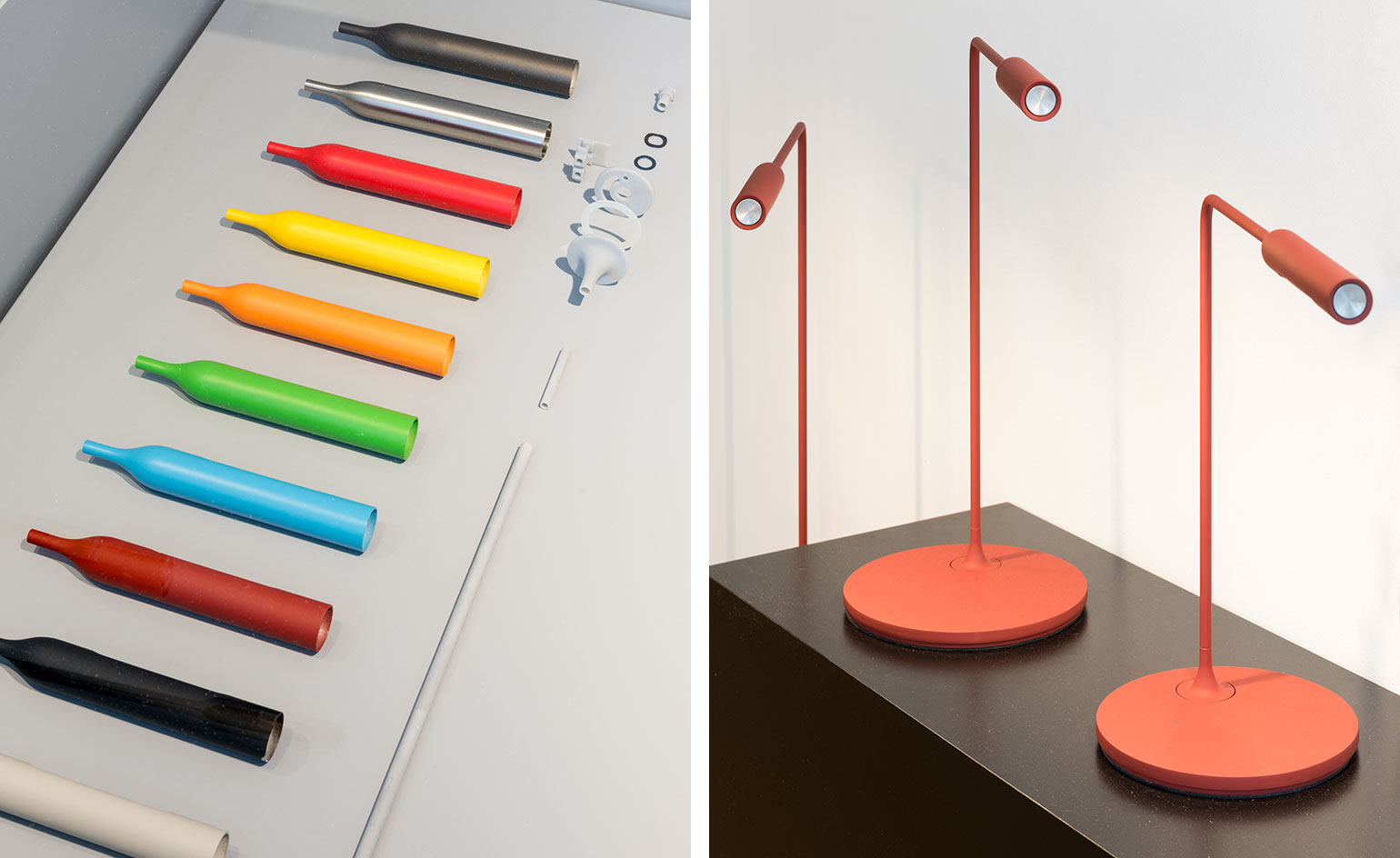
The exhibition traces different themes, exploring the diversity in the work of the current industrial design team, from door handles to wind turbines. Pictured right: Lumina's 'Flo' lamp – Foster + Partners' first collaboration with the Italian manufacturer
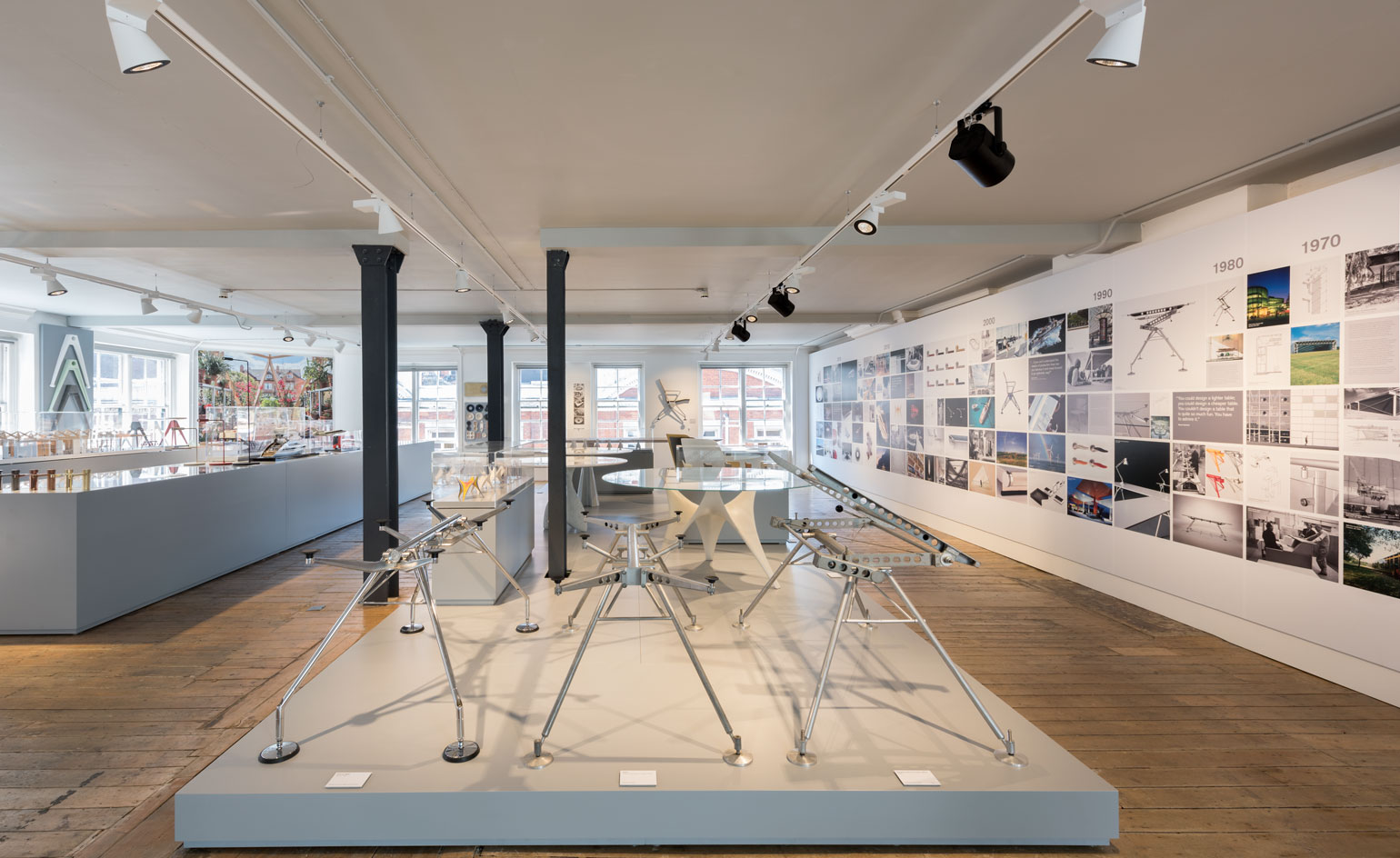
Foster + Partners' commitment to innovation and collaboration has also led to exemplary partnerships with brands such as Poltrona Frau and Walter Knoll
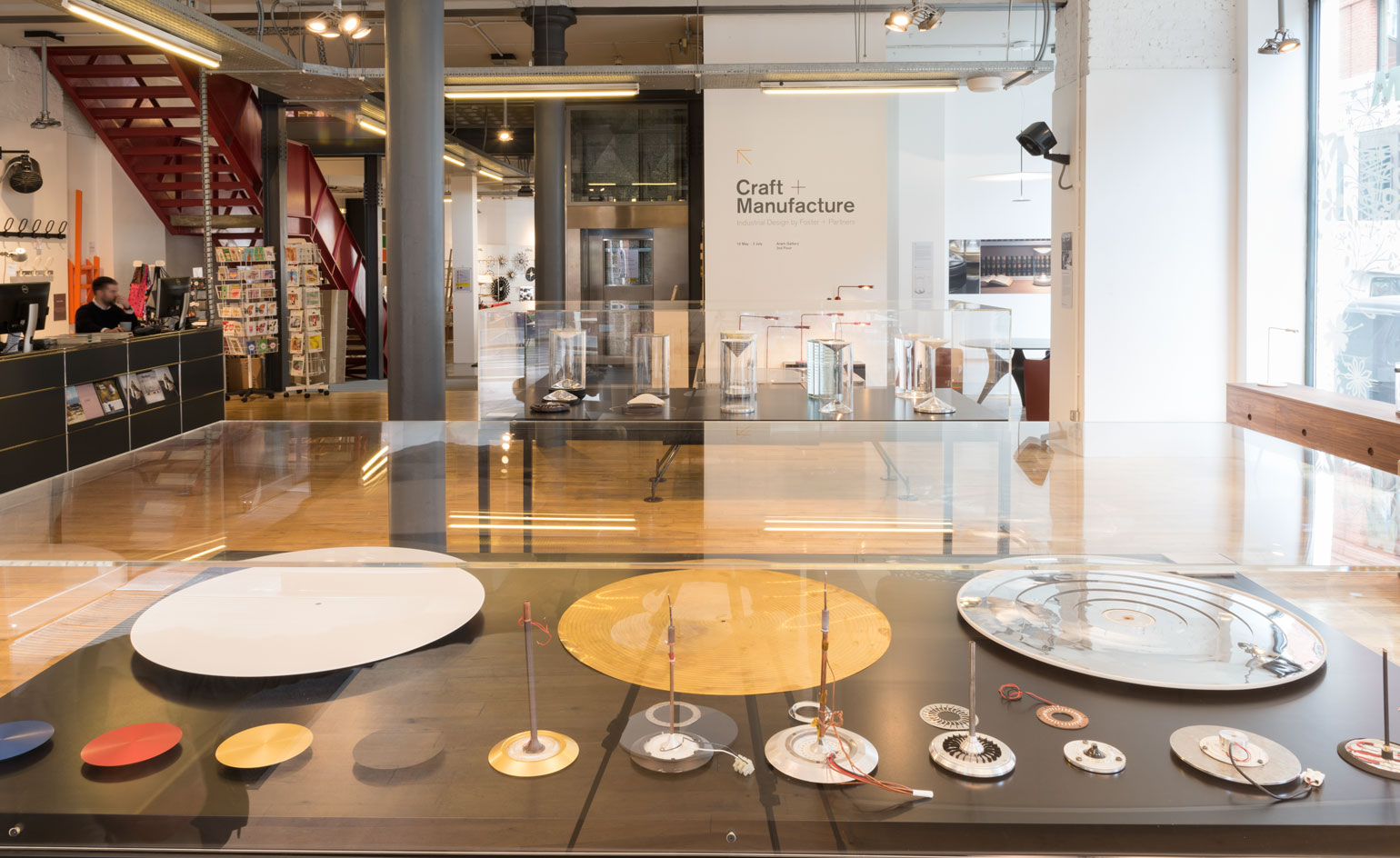
‘While Foster + Partners is mainly known for its architecture, the industrial designs produced by the practice have been impressive; it maintains creativity and rigour in all its work,’ says Zeev Aram, co-founder and director of The Aram Gallery and a long-term friend of Lord Foster
INFORMATION
‘Craft + Manufacture: Industrial Design by Foster + Partners’, is on view until 2 July. For more information, visit the Aram Gallery's website
Photography: Bea De Giacomo
ADDRESS
The Aram Gallery
110 Drury Lane
London, WC2B 5SG
Wallpaper* Newsletter
Receive our daily digest of inspiration, escapism and design stories from around the world direct to your inbox.
Rosa Bertoli was born in Udine, Italy, and now lives in London. Since 2014, she has been the Design Editor of Wallpaper*, where she oversees design content for the print and online editions, as well as special editorial projects. Through her role at Wallpaper*, she has written extensively about all areas of design. Rosa has been speaker and moderator for various design talks and conferences including London Craft Week, Maison & Objet, The Italian Cultural Institute (London), Clippings, Zaha Hadid Design, Kartell and Frieze Art Fair. Rosa has been on judging panels for the Chart Architecture Award, the Dutch Design Awards and the DesignGuild Marks. She has written for numerous English and Italian language publications, and worked as a content and communication consultant for fashion and design brands.
-
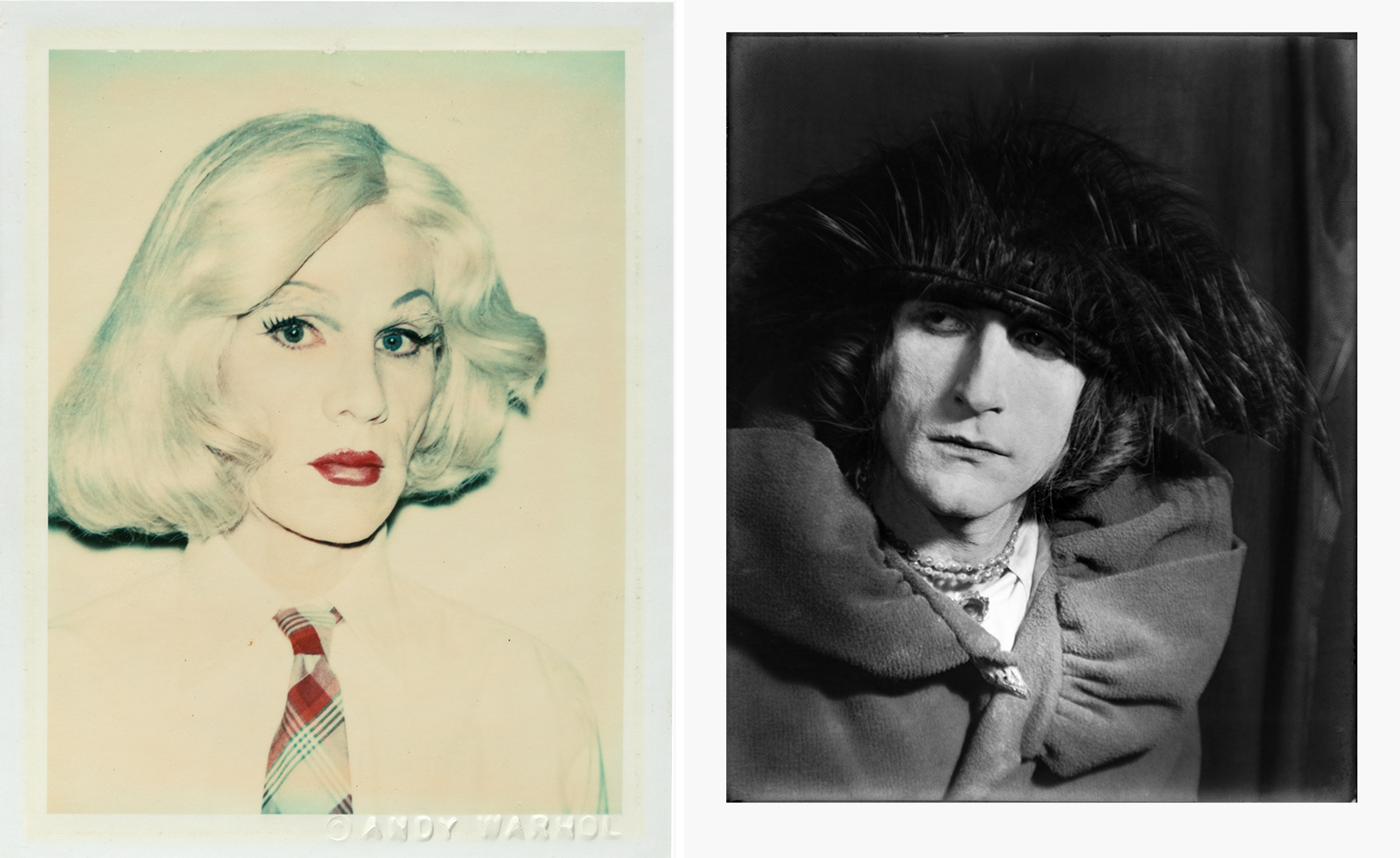 From Rembrandt to Warhol, a Paris exhibition asks: what do artists wear?
From Rembrandt to Warhol, a Paris exhibition asks: what do artists wear?‘The Art of Dressing – Dressing like an Artist’ at Musée du Louvre-Lens inspects the sartorial choices of artists
By Upasana Das
-
 Meet Lisbeth Sachs, the lesser known Swiss modernist architect
Meet Lisbeth Sachs, the lesser known Swiss modernist architectPioneering Lisbeth Sachs is the Swiss architect behind the inspiration for creative collective Annexe’s reimagining of the Swiss pavilion for the Venice Architecture Biennale 2025
By Adam Štěch
-
 A stripped-back elegance defines these timeless watch designs
A stripped-back elegance defines these timeless watch designsWatches from Cartier, Van Cleef & Arpels, Rolex and more speak to universal design codes
By Hannah Silver